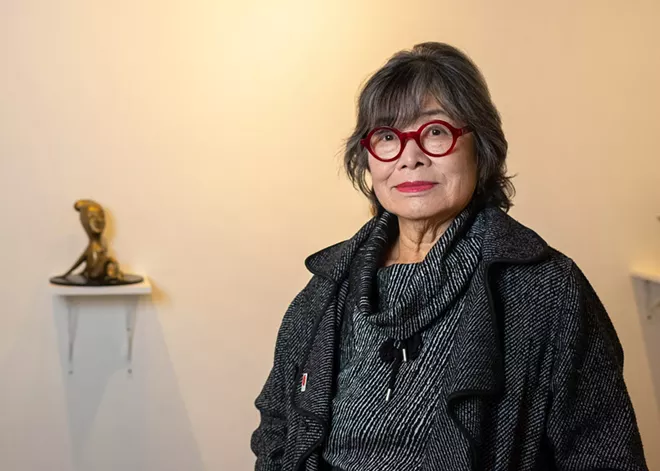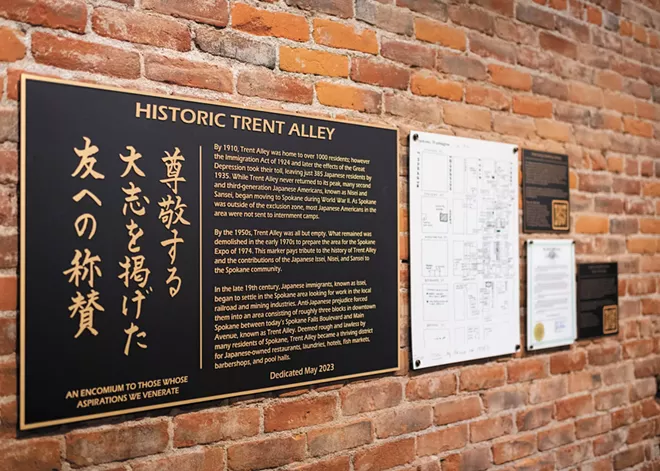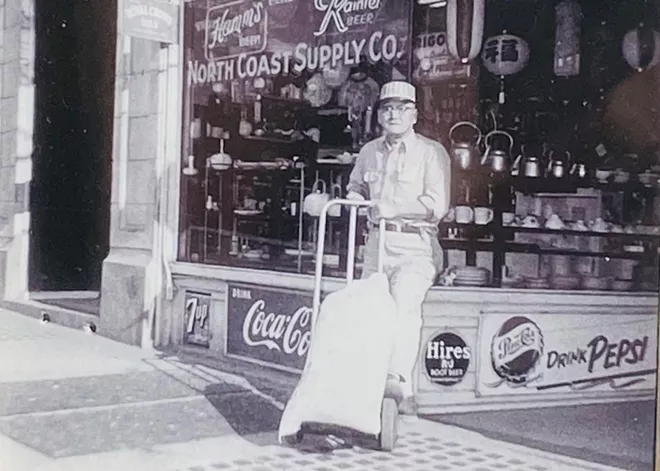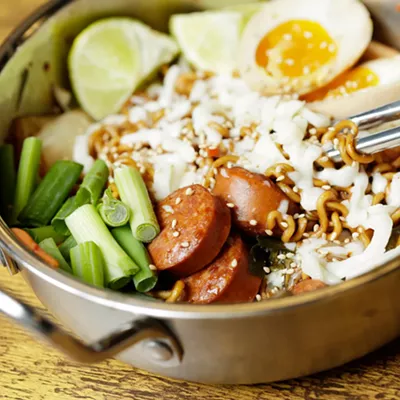
A map of downtown Spokane's east end, circa 1910, would be barely recognizable to most locals today.
Even though all the familiar street names are there — Riverside, Main, Bernard, Browne, Howard and Sprague — little else from that era remains. Narrow rectangles on each block are neatly labeled in compact script. Businesses like the Raymond Hotel and Seattle Cafe are noted alongside the Nishikawa Grocery, Yokohama Laundry, Saeki Dye Work and many others.
During an era of rapid growth for Spokane, this district became known as Trent Alley and was, at the time, home to more than 1,000 first-generation Japanese immigrants who started successful businesses and created a thriving pocket of culture in a place that wasn't always friendly to them.
A detailed, hand-drawn map of Trent Alley, before it began emptying out after World War II and was eventually razed to make way for Expo '74, can now be viewed inside the Saranac Building at 25 W. Main Ave. alongside several commemorative plaques explaining the area's vibrant history. Later this month, a bronze sculpture by one of Trent Alley's most successful former residents, renowned ceramicist Patti Warashina, is set to be installed for permanent display in front of the signs, which were installed in July.
Spearheaded by the Hifumi En Society, an organization supporting the Spokane area's Japanese-American community, the Trent Alley Project highlights a part of local history that many feel has long been overlooked, especially during the 50th anniversary celebration of Expo earlier this year.
"When all of the talk about Expo '74 and commemorating its anniversary began, we were starting to talk about the reality that, though most of the Japanese had moved out of Trent Alley by then, the businesses that were still there were definitely moved out for the creation of Expo '74," says DeAnn Yamamoto, who worked on the project.
"While that was an amazing endeavor for Spokane, it continued to impact the Japanese community and the businesses that were there during that time," Yamamoto continues. "It really is sansei [third-generation Japanese] wanting to commemorate a memory of the work of the life that the Japanese, the first and second generation — issei and nisei — created in Spokane."
Yamamoto's grandparents on her father's side were among the early entrepreneurs of Trent Alley, operating a hotel. Her father, Dick, was born and raised there.
Her mother, Kazuye, meanwhile, grew up on a farm south of Yakima on the west side of the Columbia River. When President Franklin D. Roosevelt signed Executive Order 9066 in 1942 forcing all people of Japanese ancestry — two-thirds of whom were American citizens — from their homes along the West Coast into remote concentration camps, Kazuye's family found themselves on the wrong side of the river. A teenager at the time, Kazuye spent most of her high school years at the Heart Mountain War Relocation Center in northern Wyoming.
"I graduated from Heart Mountain High School," Kazuye, 97, says. "After camp, we had nothing to go back to so we came to Spokane."
Kazuye's father had friends in the city, and he opened a billiard hall in Trent Alley. Kazuye worked as a housekeeper on the South Hill while she and her family lived in the Clem Hotel, where the Davenport Grand Hotel stands today, before finding more permanent housing.
"It was not glamorous," her daughter DeAnn says. "It was known as skid row. Japanese were redlined, and they couldn't live anywhere above Ninth Avenue in Spokane. And so in those days, they lived there because they had to live there. And Japanese are industrious, and they're optimistic, so they made the best of things and created a thriving community. But honestly, I would think that the majority of culture was afraid to go there, because it was run down. It was not a glamorous life by any means, but it was their life and it was where they found community."

Born in Spokane in 1940, artist Patti Warashina first lived in Trent Alley, where her father ran a dental practice at the corner of Stevens and Main.
"My parents, because of the war and all that, they went through a lot, as all Japanese did at that time in Spokane. There was a lot of animosity," Warashina says. "I wasn't really affected by it because I was pretty small at that time — I was probably 4 or something like that. Growing up in Spokane, there was a very, very small Japanese community, it wasn't like in Seattle."
The family later moved to North Spokane, and Warashina attended Lewis & Clark High School.
"It was a very academic schedule that I had because my parents wanted me to earn a living, and so I never took any art classes at all," she says of high school. "I never even thought about being an artist."
Warashina studied at the University of Washington, where she discovered her love of art in an elective course. She went on to establish herself as one of the nation's foremost modern ceramicists, an accomplishment cemented in 2020 when the Smithsonian honored her with its prestigious Visionary Award.
Warashina, 84, still creates in her Seattle studio almost daily and is currently working on an ongoing series called "The World Upside Down," which she says reflects on "what's happening in life right now. You know, it's all this climate change and all the horrible things that are happening all over the world and our terrible politics right now."
Warashina's art is also featured through November at Marmot Art Space in Kendall Yards.
Her contribution to the Trent Alley Project is more subtly symbolic. "Woman With Pear" is a 3-foot-tall bronze bust of a woman balancing a pear on the top of her head. The woman's hair twists out from the nape of her neck in two curly spirals as her eyes peer upward toward the object, a representation of femininity, atop her head.
"I was in Rome for a quarter teaching," Warashina says of her inspiration for the piece, created in 2005. "I was walking around, and there is all this classical sculpture in the city."
Recently purchased by Saranac Building owners Jim Sheehan and his daughter, Katy Sheehan, "Woman With Pear" is one of two pieces by Japanese-American artists complementing the Trent Alley Project's plaques. A commissioned painting by Seattle artist Marie Okuma Johnston, who grew up in Spokane, is also in the works.
As one of the only original buildings from Trent Alley's heyday, the Saranac holds important history for Spokane's Japanese community. Hifumi En Society Vice President Joanne Ferris remembers going there as a child when it housed North Coast Supply, a Japanese import shop.
"It was one of the only stores that carried authentic Japanese food," Ferris says. "Up above there was a hotel and apartments, and Denny Yasuhara as a young teacher lived up there," she continues. "And now a middle school is named after Denny — Yasuhara Middle School. So I went back to the Hifumi En Society and I said, 'I think I found a place where the plaque would be perfect.'"
Ferris says the commemoration inside the Saranac emphasizes the society's past and continuing work to ensure the Japanese American history of Spokane isn't forgotten, especially as those who still remember Trent Alley enter their 70s and 80s.
"We need to embrace that culture and bring it forward and definitely share it," she says. "So this plaque, the wall, the dedication — that's just the beginning of what we hope to do." ♦
Learn more about the Hifumi En Society at hifumien.org.
























